Luxury Statement Wall Art: Elevating Homes with Timeless Impact
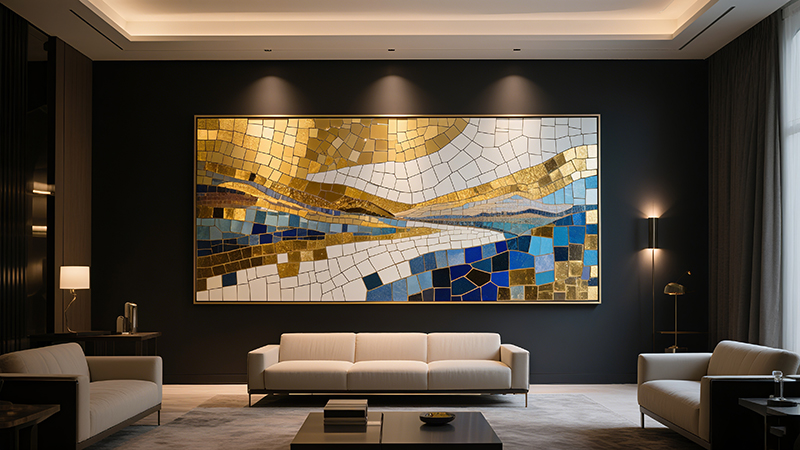
Contents
- Introduction
- 1. Why Luxury Statement Wall Art Matters More Than You Think
- 2. Decoding European vs. North American Aesthetic Preferences
- 3. How to Choose a Piece That Stops You in Your Tracks
- 4. Scale & Placement: Secrets to Making Art Feel “Meant to Be”
- 5. Materials That Elevate: From Wood to LED-Infused Art
- 6. Mixing Styles Without Chaos: A Guide for Eclectic Homes
- 7. Budget-Friendly Luxury: How to Get High-End Looks Without Overspending
- 8. Custom vs. Ready-Made: Which Is Right for You?
- 9. Maintenance: Keeping Luxury Art Looking Pristine
- 10. Where to Buy: Top Sources for Luxury Statement Wall Art in Europe & North America
- Conclusion
Introduction
In the heart of a Parisian apartment or a suburban Toronto home, one element has the power to transform a space from “nice” to “unforgettable”: luxury statement wall art. Unlike generic decor that fades into the background, these pieces are intentional—they tell a story, set a mood, and turn ordinary rooms into reflections of personal identity.
In European and North American markets, where home design increasingly prioritizes personalization over fleeting trends, statement wall art has evolved from a luxury to a necessity. A 2024 survey by the European Home Decor Association revealed that 68% of homeowners in Germany, France, and the UK prioritize “unique, conversation-starting art” during renovations, while 72% of U.S. homeowners cite “art that feels ‘distinctly mine’” as a top priority.
This guide explores how to select, place, and maintain luxury statement wall art that aligns with Western design sensibilities, stands the test of time, and transforms your home into a space that feels uniquely yours.
1. Why Luxury Statement Wall Art Matters More Than You Think
In Milanese lofts and Brooklyn brownstones alike, the right wall art does more than fill space—it defines the room’s identity. Here’s why settling for less is a missed opportunity:
- Emotional Resonance: High-quality art evokes emotion. A bold abstract in a London living room might channel the city’s vibrant energy, while a textured wood piece in a Vancouver home could mirror the region’s lush forests. Unlike mass-produced prints, luxury pieces carry the artist’s intent, fostering a deeper connection with the viewer.
- Investment Value: While decor trends come and go, well-chosen statement art often appreciates in value. Works from emerging European artists (such as Berlin’s street art converts or Barcelona’s mixed-media creators) or North American artisans (like Portland’s metalworkers or Quebec’s textile artists) frequently gain value as their reputations grow.
- Space Transformation: A 2023 study by the American Society of Interior Designers (ASID) found that rooms featuring one large statement piece are perceived as 30% more “thoughtfully designed” than those with multiple small artworks. In open-concept homes—common in North America—statement art anchors functional zones (e.g., a dining area within a great room) without physical barriers.
A common mistake is treating art as an afterthought. In Munich, a client once furnished their entire home first, then “found art to match.” The result? A disjointed space. Art should guide design, not follow it.
2. Decoding European vs. North American Aesthetic Preferences
While personal taste is paramount, understanding regional design nuances can refine your search:
| Aspect | European Preferences | North American Preferences |
| Color Palettes | Muted tones (ochres, forest greens, soft grays); bold accents in Mediterranean regions (Spain, Italy). | Vibrant hues (navy, terracotta, mustard) in casual spaces; neutrals (ivory, taupe) in formal areas. |
| Materials | Natural textures (hand-carved oak, linen weavings, ceramic mosaics) with artisanal finishes. | Industrial elements (steel, reclaimed wood, concrete) blended with luxe touches (brass, velvet). |
| Scale | Balanced with architectural details (e.g., a 1.8m piece in a historic Parisian salon with high moldings). | Larger-than-life pieces in modern homes (e.g., 3m-wide abstracts in Calgary lofts with 4m ceilings). |
| Themes | Vintage-inspired (19th-century landscapes, classical motifs) in older homes; minimalist abstractions in new builds. | Nature-focused (mountainscapes, coastal scenes) in rural areas; urban art (graffiti-inspired, pop culture) in cities. |
Pro tip: Blend both styles! A Dutch client in Boston paired a traditional Delft blue ceramic wall installation with a large-scale American abstract—creating a space that felt “rooted and new.”
3. How to Choose a Piece That Stops You in Your Tracks
Luxury statement art isn’t defined by price tags—it’s about that visceral “I need this” reaction. Here’s how to find it:
- Start with emotion: Ask, “What feeling do I want this room to evoke?” Calm? Energy? Nostalgia? A Vancouver client seeking “coziness” in their home office chose a 2m-wide woven wool tapestry in earthy tones; a Berlin client aiming for “dynamism” in their living room opted for a kinetic metal sculpture that moves with air currents.
- Contrast, don’t match: If your sofa is a solid gray (common in North America), a bold red abstract creates striking visual tension. In a Parisian apartment with patterned wallpaper (floral, toile), a monochrome marble slab art piece grounds the space.
- Material storytelling: In Portland, a client passionate about sustainability selected a wall art piece made from recycled ocean plastic, cast in resin with embedded sea glass—both a statement piece and a reflection of their values. In Tuscany, another chose a hand-painted ceramic tile mural, paying homage to local craftsmanship.
- Test before buying: Use apps like ArtPlacer to digitally overlay art on your wall. For physical confirmation, tape newspaper in the exact dimensions (e.g., 2.4m x 1.8m) and live with it for a few days. A London client initially thought a 3m piece was “too big” but changed their mind after this test—now it’s the home’s focal point.
4. Scale & Placement: Secrets to Making Art Feel “Meant to Be”
Even the most stunning art falls flat with poor placement. Master these rules:
- Height matters: For freestanding walls (not above furniture), the center of the art should sit 150–160cm from the floor—aligning with the average eye level of most adults, whether in Copenhagen or Chicago. Above a sofa or bed? Leave 15–20cm between the furniture top and art bottom to avoid visual crowding.
- Ceiling height hack: In rooms with ceilings over 3m (common in North American suburban homes), opt for vertical pieces. A 2.7m tall metal sculpture in a Toronto foyer draws the eye upward, enhancing the space’s grandeur. In European homes with lower ceilings (e.g., 2.5m in historic Amsterdam canal houses), choose wide, low pieces (1.2m tall x 2.4m wide) to create horizontal flow.
- Furniture harmony: Art above a dining table should span 2/3 to 3/4 of the table’s width. A 1.8m table (standard in many European homes) pairs well with a 1.2–1.5m art piece; a 2.4m table (common in North American dining rooms) requires 1.6–2m art.
- Unexpected spots: Laundries, powder rooms, and even walk-in closets deserve attention. A small (but impactful) 60cm x 60cm neon art piece in a NYC apartment’s powder room became a guest favorite; a framed vintage silk scarf collection in a Parisian walk-in closet added luxury to daily routines.
5. Materials That Elevate: From Wood to LED-Infused Art
The material of your wall art affects texture, light interaction, and longevity—critical factors in European and North American markets where durability is key:
- Wood: FSC-certified oak, walnut, or teak (sustainable choices) work in both rustic (Vermont cabins) and modern (Stockholm apartments) settings. Hand-carved reliefs add depth; charred wood (shou sugi ban technique) offers a bold, Japanese-inspired look trending in Berlin and Seattle.
- Metal: Laser-cut steel with powder coating resists rust (ideal for humid North American basements). Brass ages beautifully—developing a patina that adds warmth to minimalist spaces in Milan or Montreal.
- Textiles: Wool, silk, and linen weavings (such as Scandinavian rya rugs repurposed as wall art) add softness. In dry climates like Arizona, avoid silk (it dries out); opt for cotton instead. In damp UK homes, choose mildew-resistant synthetics.
- Mixed media & tech: LED-integrated art is gaining popularity. A London designer created a backlit acrylic piece that glows softly at night, transforming a dark hallway into a focal point. Resin art with metallic pigments (popular in LA) catches light, making it perfect for rooms with large windows (common in California).
6. Mixing Styles Without Chaos: A Guide for Eclectic Homes
Gone are the days of strict adherence to a single style, such as “strictly modern” or “only vintage.” Here’s how to blend styles seamlessly:
- Tie with a common thread: A mid-century sofa (a North American favorite) and a Baroque-inspired mirror (a European classic) work well if both feature brass accents. A Parisian client mixed a 1970s abstract print with a contemporary concrete sculpture—united by repeated terracotta tones.
- Balance “loud” and “quiet”: If your art is bold (e.g., a graffiti-style canvas in a Toronto loft), keep furniture simple (linen sofas, wooden coffee tables). In a Rome apartment with ornate, gilded frames, the art inside is minimalist—letting the frame be the “drama.”
- Layer with confidence: Hang a small vintage map (common in European homes) overlapping a large abstract in a Boston living room. The contrast feels curated, not cluttered.
7. Budget-Friendly Luxury: How to Get High-End Looks Without Overspending
Luxury doesn’t require a six-figure budget. These strategies work across Europe and North America:
- Art school gems: Graduation shows at institutions like Rhode Island School of Design (RISD) or London’s Central Saint Martins feature emerging artists selling work for a fraction of gallery prices. A Berlin client bought a 2m canvas for €300 at Universität der Künste Berlin—now valued at €2,000.
- Digital art + premium printing: Platforms like Society6 or Saatchi Art offer limited-edition digital prints. Purchase the file, then print on museum-grade paper (e.g., Hahnemühle) at local shops (e.g., Staples in North America, Printworks in Europe). A 1.8m print costs ~150–300, plus a 200 frame—achieving a high-end look for under 500.
- Vintage & thrift finds: A Paris flea market yielded a 1960s oil painting for €80; re-framed in oak, it’s now the star of a Brooklyn dining room. In Seattle, thrift stores often have large framed prints—simply swap the art inside for a custom fabric panel.
- DIY with a twist: Not crafty? Hire local artists for small commissions. A Toronto client paid a student $400 to create a 2m abstract using their wedding colors—resulting in a personal and budget-friendly piece.
8. Custom vs. Ready-Made: Which Is Right for You?
Custom art is exciting, but it’s not always the best choice. Here’s when to splurge:
- Awkward spaces: A London townhouse with a sloped ceiling? A custom triangular canvas fills the gap perfectly. A Chicago loft with a 4m-wide but 0.6m-tall wall niche? A long, narrow metal sculpture was the only fit.
- Personal narratives: A family in Barcelona commissioned a mosaic using tiles from their ancestral village in Sicily—art that tells their unique story. A Vancouver couple transformed their kids’ drawings into a large-scale digital collage, printed on aluminum.
- Color precision: Matching art to a specific paint shade (e.g., Farrow & Ball’s “Skylight”) is easier with custom pieces.
When to skip custom? If you’re indecisive (design tastes change!), on a tight timeline (good artists book 3–6 months in advance), or if ready-made options fit better. A Milan client spent €5,000 on a custom piece, then fell in love with a €1,200 print a month later—a valuable lesson.
9. Maintenance: Keeping Luxury Art Looking Pristine
Investing in art means protecting it. Here’s how to do it, tailored to regional climates:
- Sunlight: In sun-drenched Southern European homes (Spain, Greece) or sunny U.S. states (Florida, Arizona), UV-protective glass is essential. It blocks 99% of harmful rays, preventing fading in silk or watercolor pieces.
- Humidity: Bathrooms in London (damp) or Seattle (rainy) require sealed art (e.g., resin-coated prints, metal). Avoid paper or unvarnished wood—they warp easily. In dry climates (Colorado, Provence), use humidifiers near textile art to prevent cracking.
- Dusting: Textured pieces (woven tapestries, carved wood) trap dust. Use a soft-bristle brush weekly. Metal art (brass, copper) can be polished with lemon juice and salt (natural, non-toxic) to maintain shine.
- Weight & installation: Large metal or concrete art needs sturdy anchors. In North American homes with drywall, use toggle bolts; in European stone walls, hire a professional with masonry tools.
10. Where to Buy: Top Sources for Luxury Statement Wall Art in Europe & North America
Skip generic home decor stores. These sources offer unique pieces:
- Galleries: Blue Chip Gallery (NYC) for contemporary works; White Cube (London, Paris) for cutting-edge artists. Many offer flexible payment plans.
- Art fairs: Art Basel (Switzerland, Miami) for high-end pieces; Affordable Art Fair (cities worldwide) for emerging talent (€500–€5,000).
- Online platforms: 1stdibs (curated vintage and custom art); Etsy (independent artisans—search “large wall art” + “handmade”).
- Local artists: Check Instagram (hashtags like #LondonWallArt or #LAArtist) or community studios. A Berlin-based sculptor created a custom steel piece for a client after a single Zoom call.
Conclusion
Luxury statement wall art isn’t about impressing neighbors or following trends—it’s about creating a home that feels unapologetically you. For European and North American homeowners, it’s the bridge between a “house” and a “sanctuary”—a space that tells your story the moment someone walks in.
Whether you choose a hand-woven tapestry in a Copenhagen apartment or a massive abstract in a Texas ranch, remember: the best pieces are the ones that make you smile every time you enter the room. Start small if you must, but start—your home (and your future self) will thank you.
Ready to transform your space? Pick one wall, define the feeling you want, and let the art hunt begin.


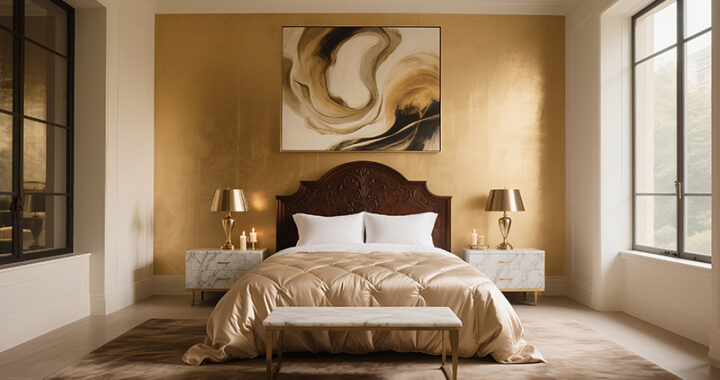 Home Decor Ideas to Make Your Home Feel Like a Luxury Hotel
Home Decor Ideas to Make Your Home Feel Like a Luxury Hotel 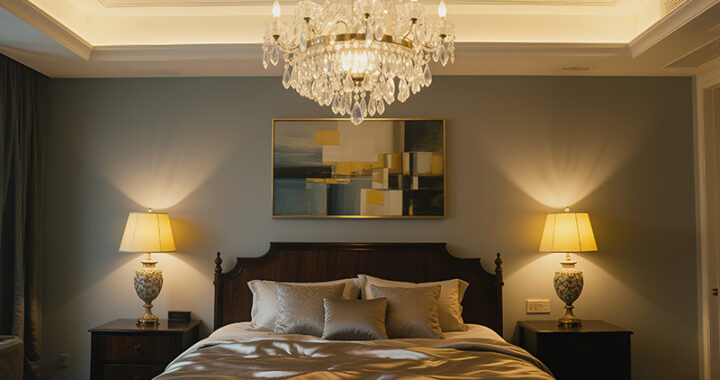 Best Luxury Accent Lighting for Every Room
Best Luxury Accent Lighting for Every Room 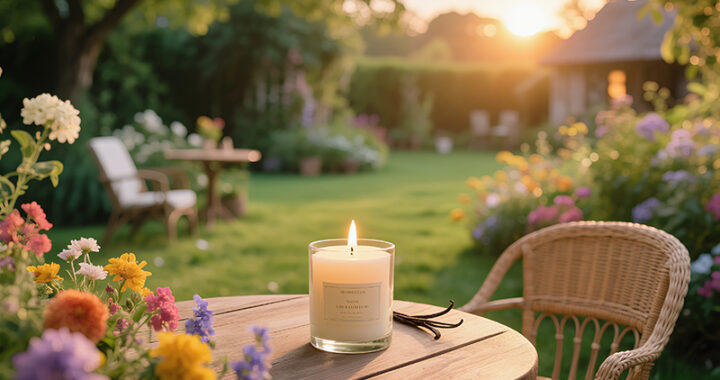 Best Luxury Candles for a Cozy and Elegant Home
Best Luxury Candles for a Cozy and Elegant Home 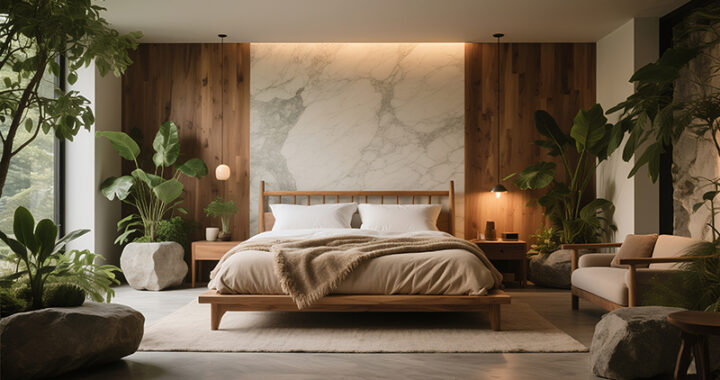 Best Luxury Bed Frames for a Stylish Bedroom
Best Luxury Bed Frames for a Stylish Bedroom 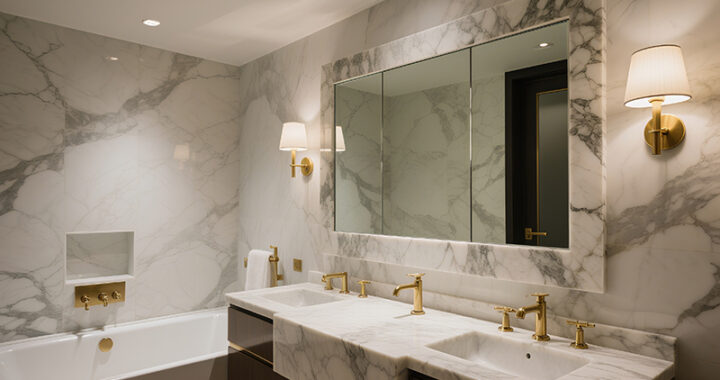 Best Luxury Bathroom Mirrors for a Stylish Touch
Best Luxury Bathroom Mirrors for a Stylish Touch 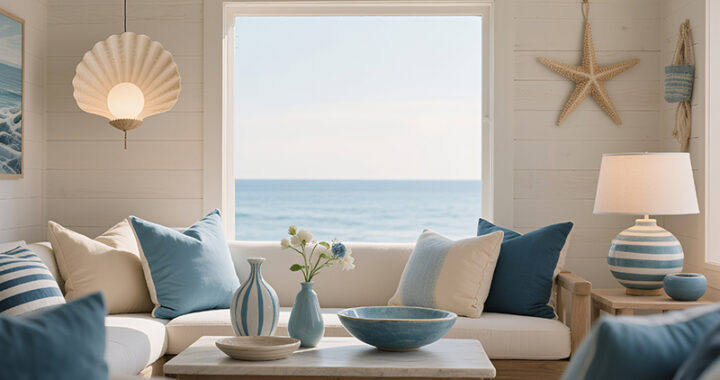 Luxury Coastal Home Decor Ideas: Elevate Your Beach House with Timeless Elegance
Luxury Coastal Home Decor Ideas: Elevate Your Beach House with Timeless Elegance